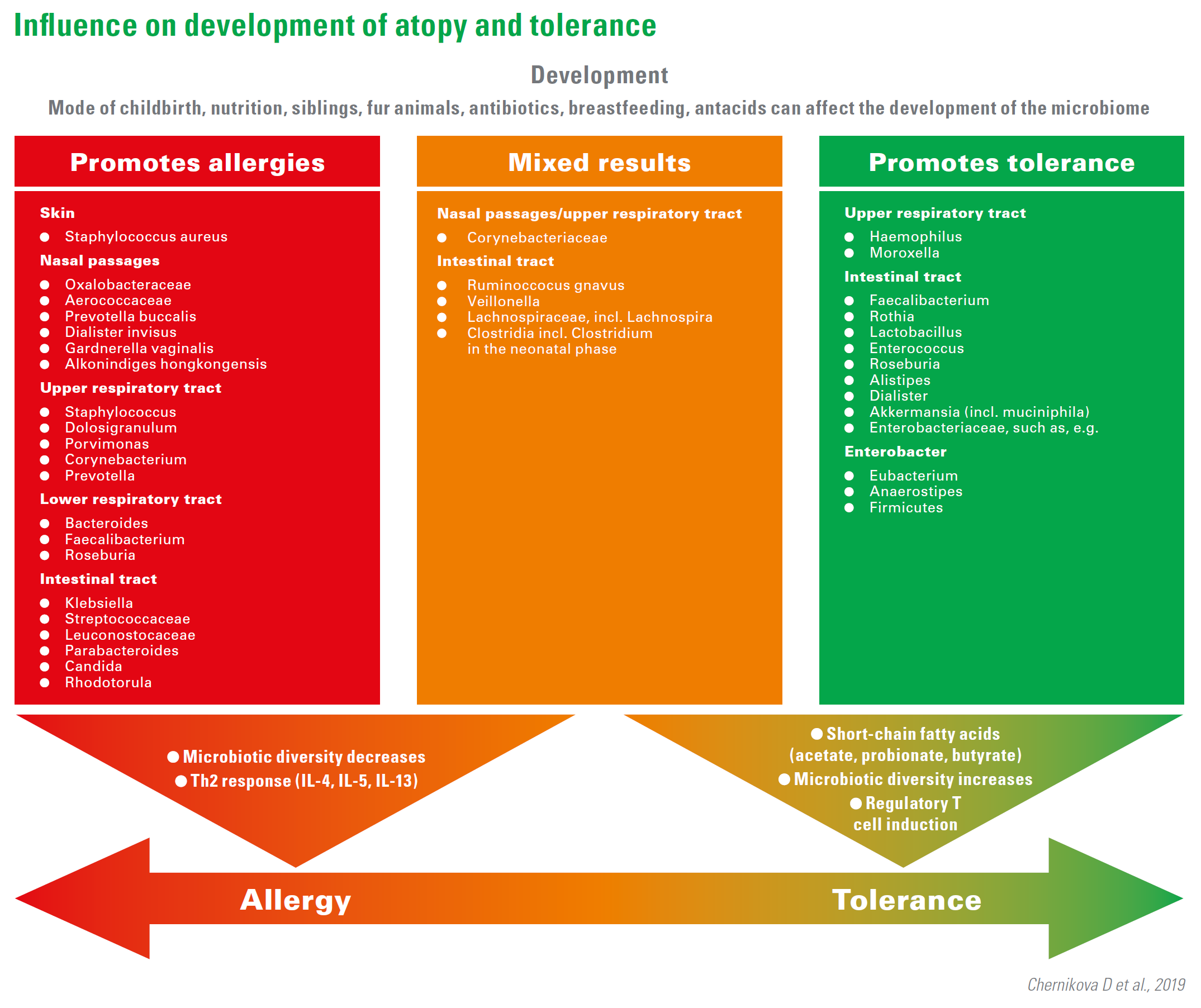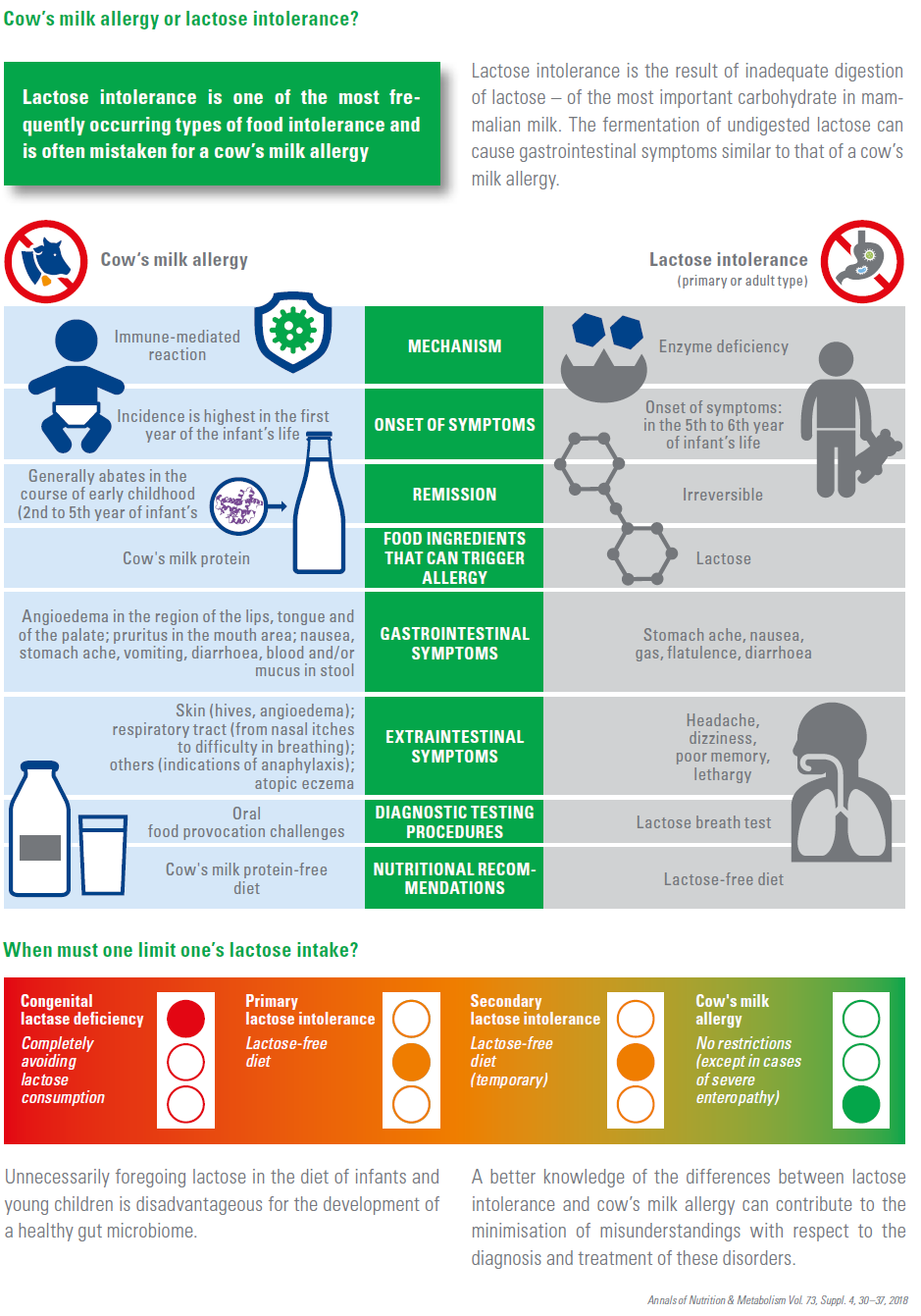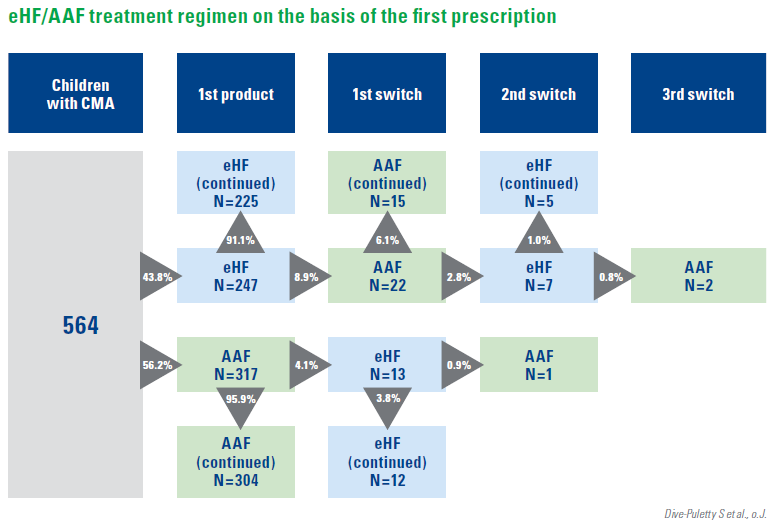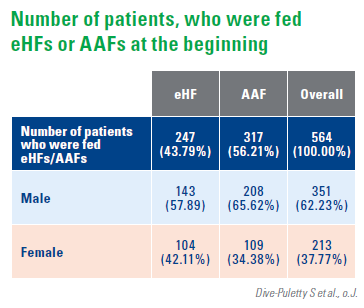Allergy prevention
Prevention of allergies through the microbiome
The most frequently examined microbiotaare the bacteria in the human digestive
tract. Its composition and diversity plays a significant role in human health.
Intestinal bacteria helps to regulate metabolism and the immune system and offers protection against the colonisation by pathogens. The human microbiome is influenced by multiple factors, including: The method of childbirth (vaginal vs.C-section), breastfeeding, nutrition, presence of siblings and pets, exposure to antibiotics and other medication.
Microbial species, which promote atopic reactions or tolerance, have been characterised. Specific microbiota presumably functions through different metabolic pathways for enhancing intestinal health, which optimally control the developing immune system.
A better understanding of the factors, which influence the healthy microbiome, can lead to specific strategies of early intervention and disease prevention.

eHF diet without animal enzymes?
The protein hydrolysis of an extensively hydrolysed diet (eHF) is usually carried out through the use of pancreas enzymes from pigs. Since they could seem unsuitable due to religious (e.g. halal or kosher diet) or cultural reasons (e.g. strict vegetarian or vegan diet), an eHF with non-animal enzymes (trial diet) has been developed.
For infants, who were fed an infant formula, an eHF is recommended as the first-line treatment of a cow’s milk allergy (CMA). The American Academy of Pediatrics (AAP) defines an eHF as “hypoallergenic” if at least 90 per cent of the infants with CMA tolerate it under double-blind, placebo-controlled conditions. The aim of this study was to characterise the peptide as well as the profile of the trial diet and to assess whether
it corresponds to the definition of AAP.
The test formula was a whey-based eHF with a microbial substance and a non-porcine enzyme mixture extracted from plants. The control formula was a whey-based marketed eHF, with enzymes from porcine pancreas (Althéra®). Taste and appearance of both eHFs could not be distinguished from each other.
79 children (2 months - 8 years) with CMA from 12 locations in the USA were recorded from 4.2015- 4.2017. The diagnosis of an IgE-mediated CMA was confirmed by an allergic reaction to cow’s milk within 6 months and milk-specific serum IgE > 0.7 kUA/L or a prick test (SPT) > 5mm. Persons sensitive to cow’s milk were recorded as well, with > 95 per cent predictive diagnoses. In a double-blind, placebo-controlled food provocation, they were fed one of both formulas in a randomised manner.
The trial formula without porcine enzymes was well tolerated by > 90 per cent of patients with CMA and corresponds to the AAP regulations. Minor differences based on peptide distribution resulted in no deviation. This data strongly supports the suitability of the tested formula for consumption by children with CMA.
Allergy or intolerance?
Lactose intolerance is often confused for patients and parents with
a cow’s milk allergy (CMA). A better understanding of the differences between these conditions could limit misunderstandings in the diagnostic approach and
in their management.
Lactose intolerance is primarily related to a syndrome with different symptoms
due to the consumption of foods containing lactose. It is the most frequently
occurring forms of food intolerance and occurs if the lactase activity is reduced.
Depending on the severity of the symptoms, patients can acquire lactose intolerance in varying degrees, depending on the type of lactose consumed. If the lactose cannot be digested by the body, it gets fermented by the intestinal microbiome. This leads to symptoms such as stomach ache, flatulence and diarrhoea in individually differing severity of clinical manifestations.
These gastrointestinal symptoms can resemble those of a cow’s milk allergy, though, which results in the danger of a misdiagnosis. But there are crucial differences between lactose intolerance and cow’s milk allergy.

Contradictions in the treatment: eHF or AAF?
In case of a diagnosed cow’s milk allergy (CMA), an extensively hydrolysed diet is the first choice; the expert associations have reached an agreement of the recommendations for the same. A German investigation shows another picture of the treatment management.
CMA manifests with heterogeneous and non-specific symptoms such as gastrointestinal, dermatological and/or respiratory disorders. In Europe, the incidence in children ≤3 years is between 1 to 7 per cent. Extensively hydrolysed formulas(eHFs) and amino acid-based formulas (AAFs) are special medical formulas for children. The latest guidelines recommend eHFs as the first choice for most of the children with CMA, AAFs should be reserved for patients with severe, life-threatening symptoms or for those who can tolerate eHFs.

A secondary data analysis was carried out for the assessment of the adherence of guidelines for the CMA diet management. The basis was the cost reimbursement data of the company health insurance funds in Germany from the 3rd quarter of 2007 to the 1st quarter of 2015.

A study population (N=564) was determined algorithmically.
It was demonstrated that the initial prescription of eHFs are, contrary to the guidelines, significantly lower than that of AAFs.
The majority of CMA patients does not switch the treatment (91% to 96%). In the children being treated with eHFs, the treatment lasted an for an average of 36 weeks (median: 28 weeks), while for the children being treated with AAFs, it lasted for an average of 43 weeks (median: 30 weeks). In case of switch from eHF to AAF, the treatment duration was 45 weeks with an average of 13 weeks until the first switch in treatment. In case of switch from AAF to eHF, the treatment duration was 50 weeks with an average of 9 weeks until the first switch in treatment.
In contrast to the recommendations of the guidelines, eHF is prescribed for less than half of the CMA cases in infancy. This result shows that the awareness for the recommendations for the first choice of eHFs needs to be intensified.
